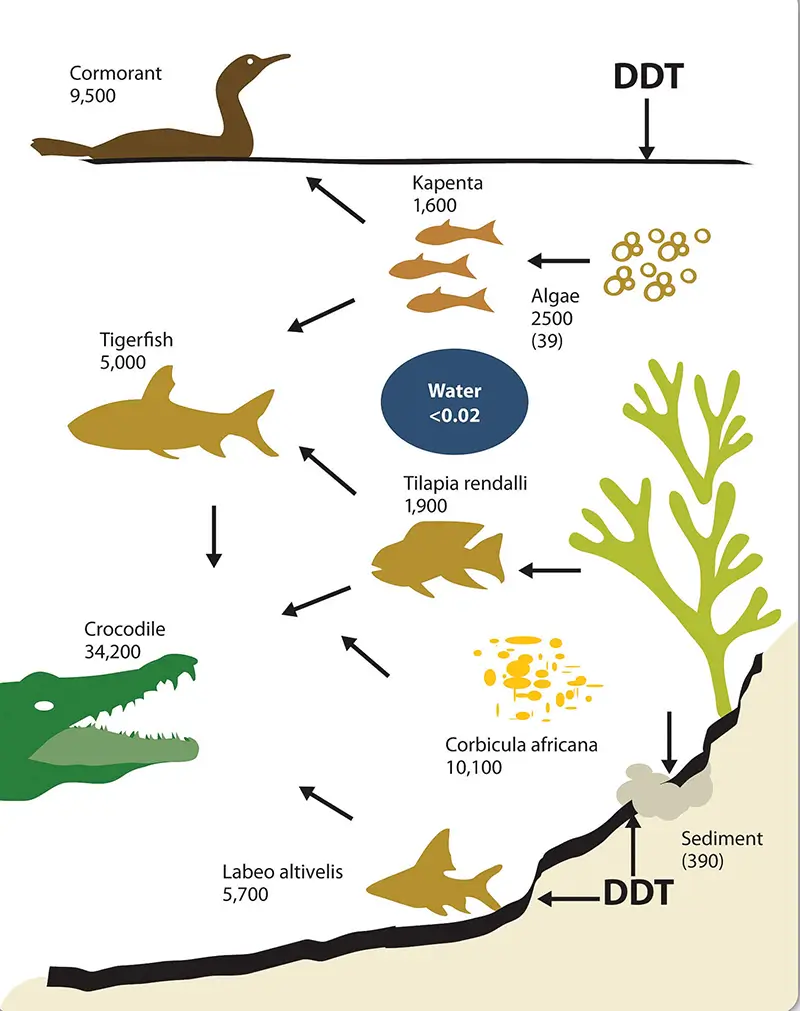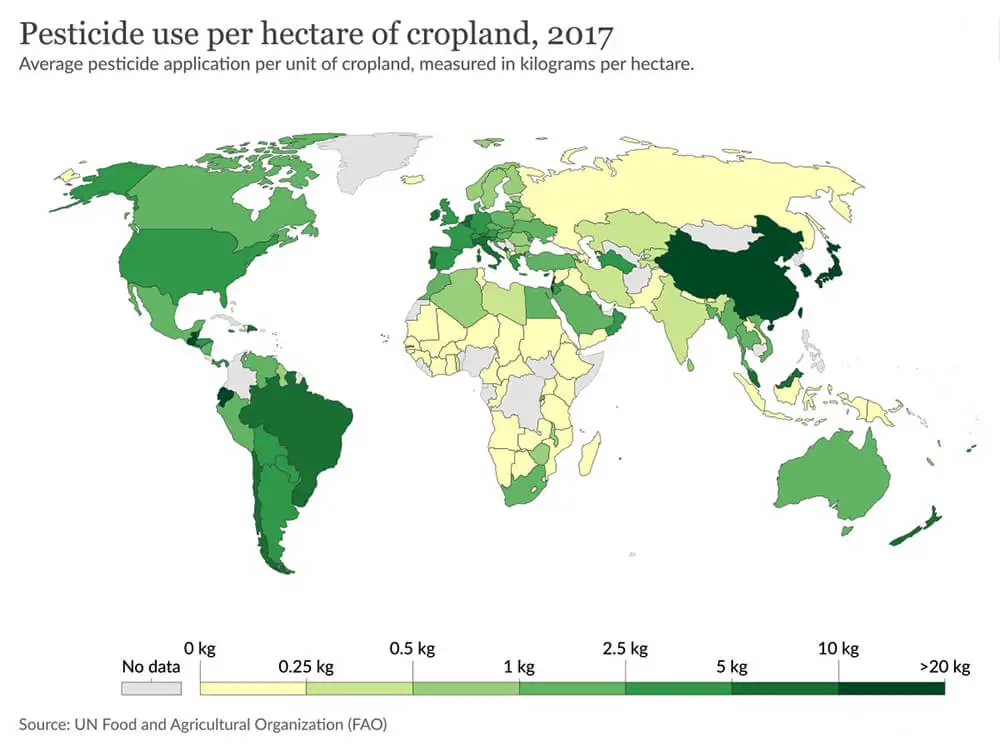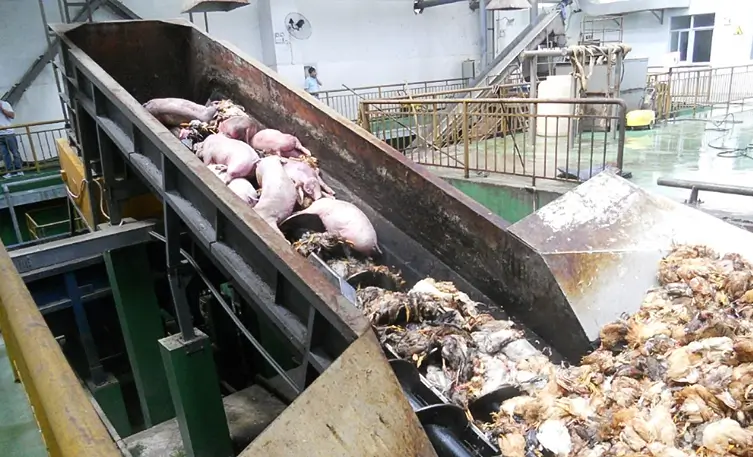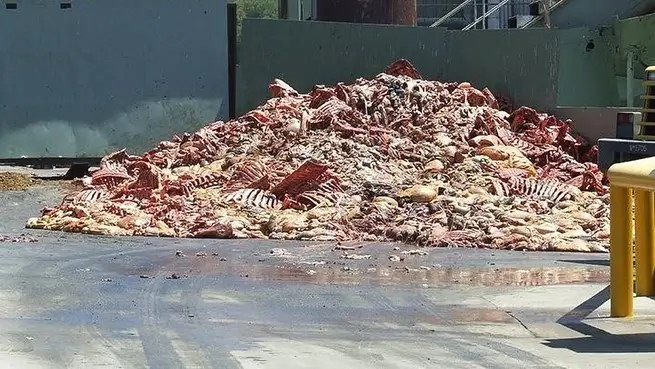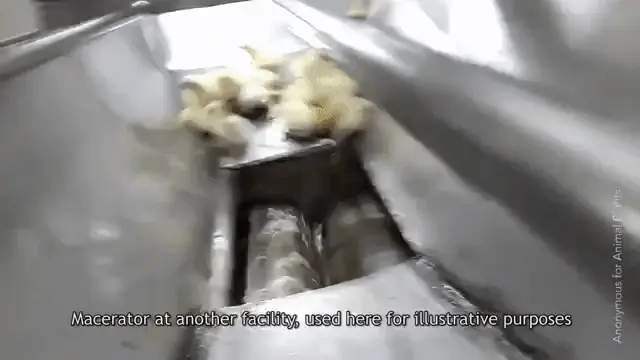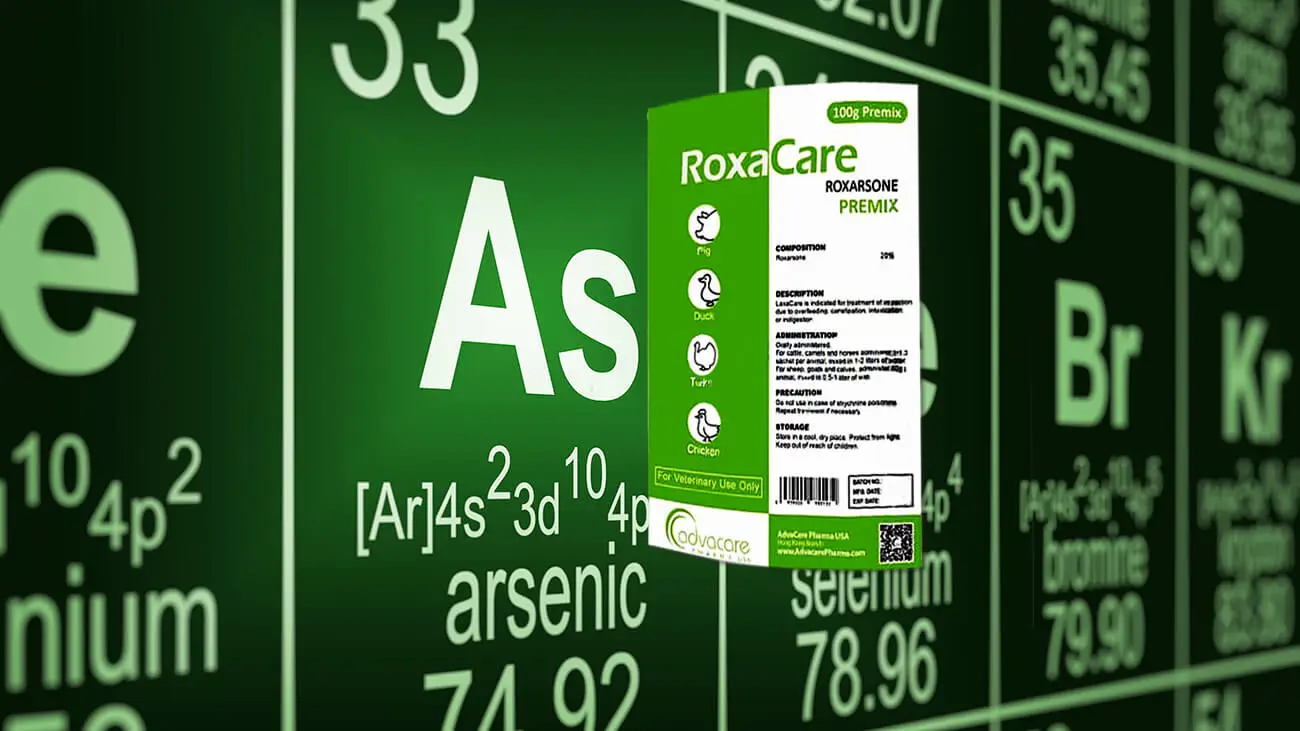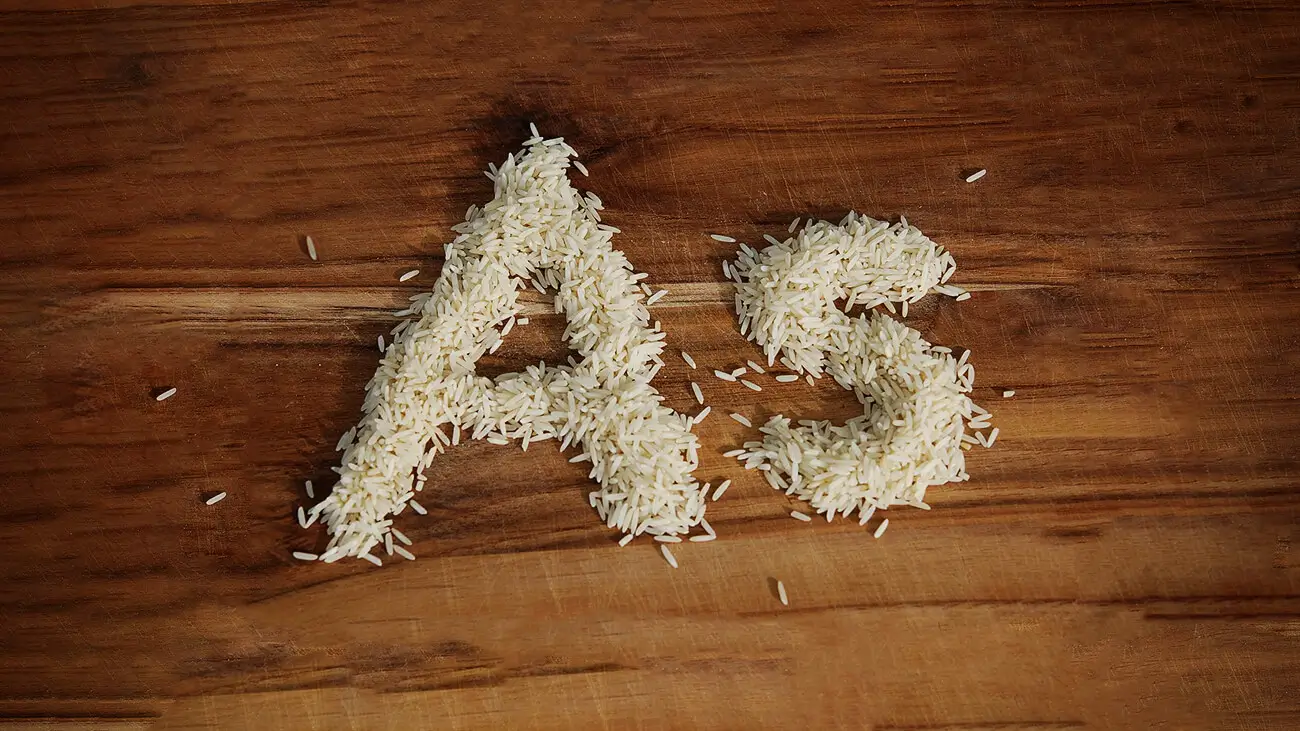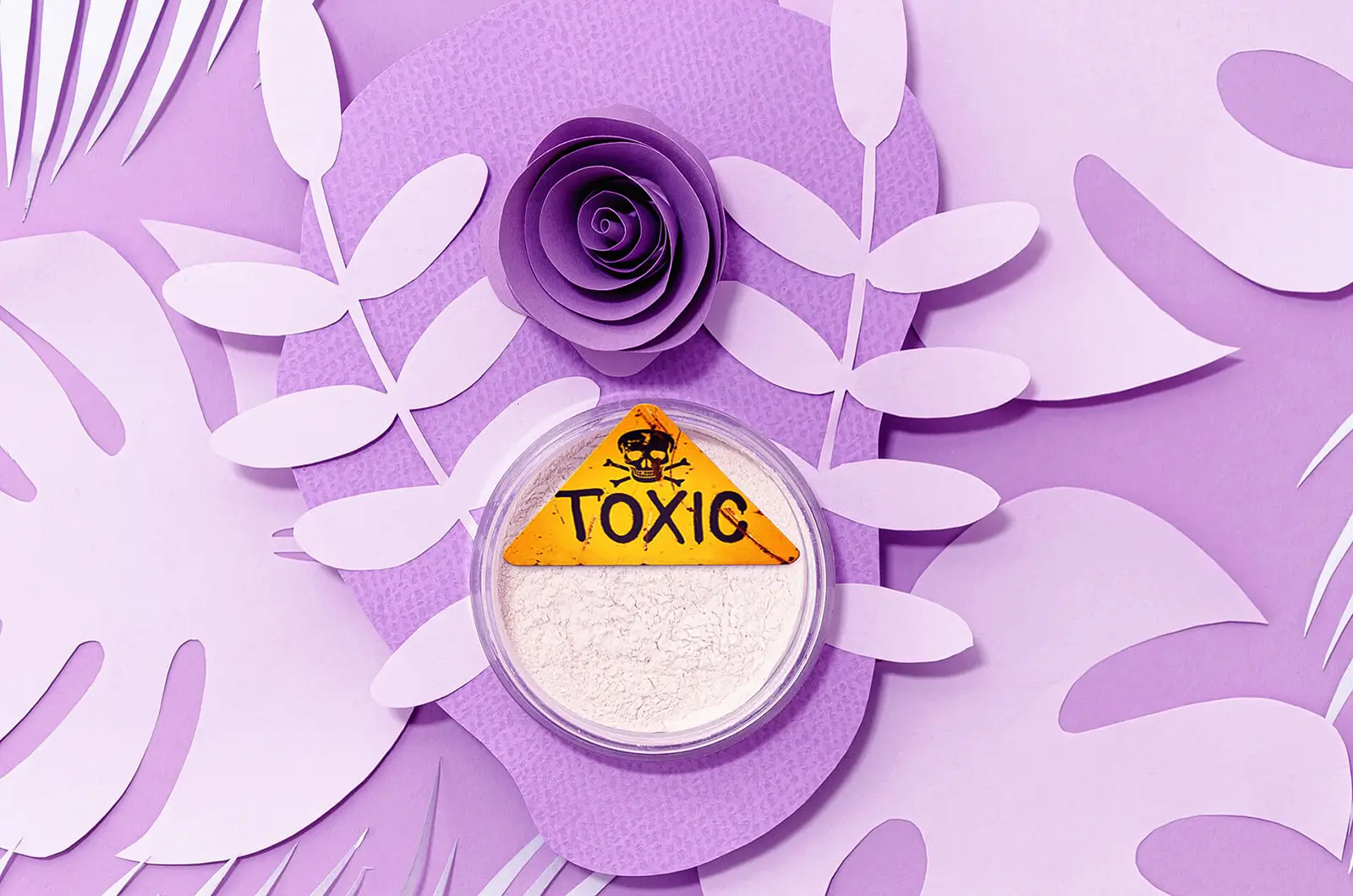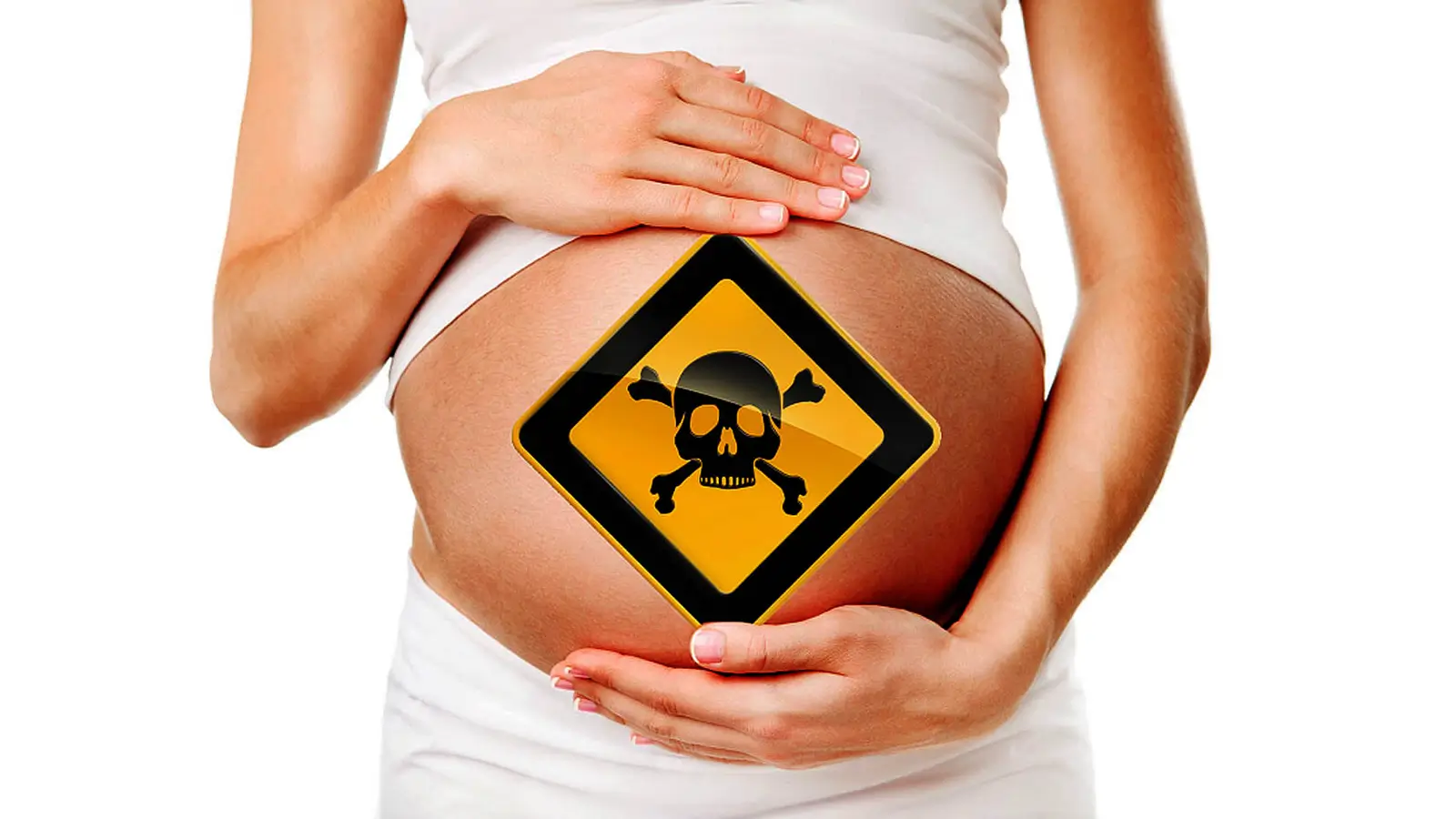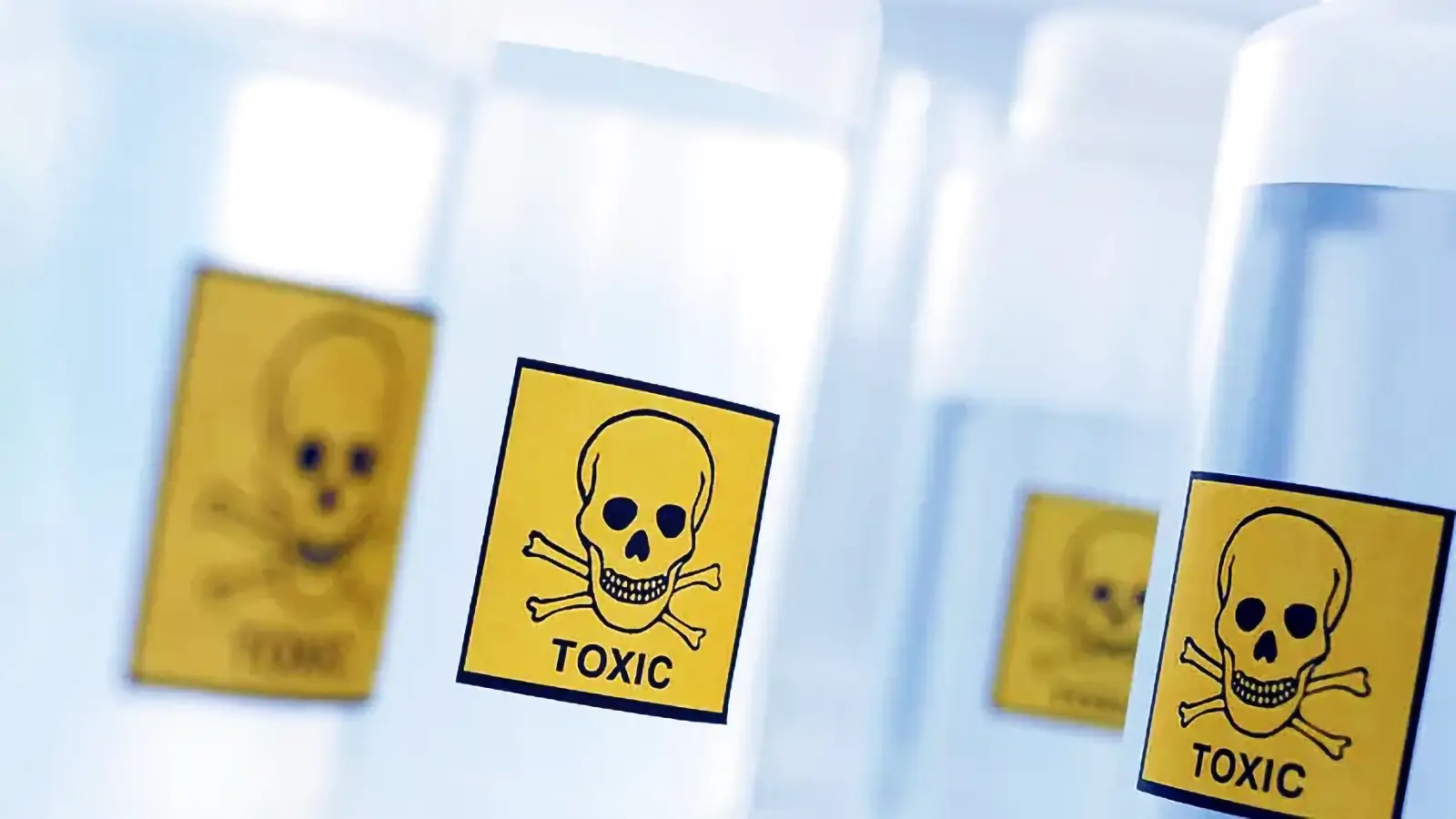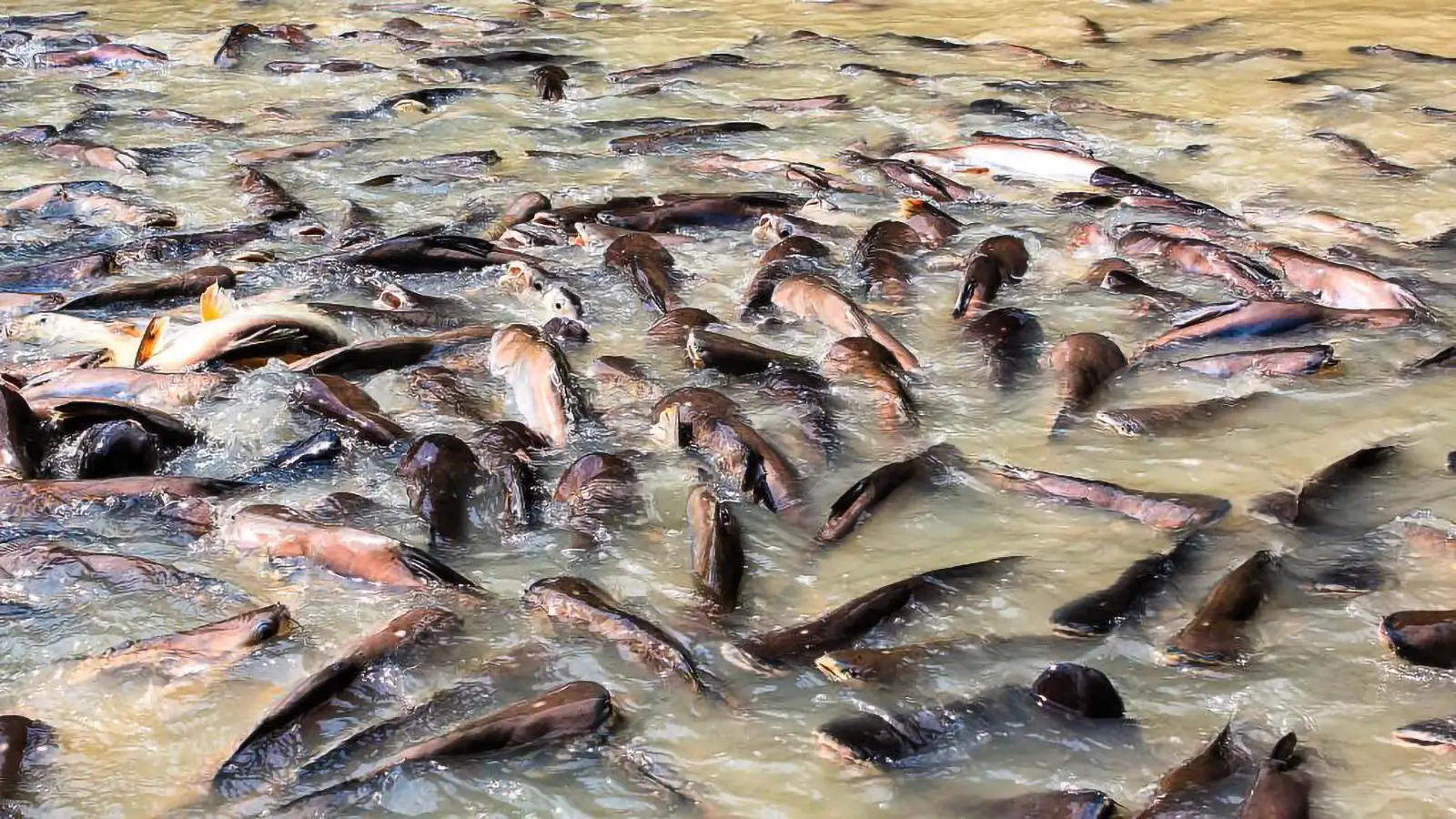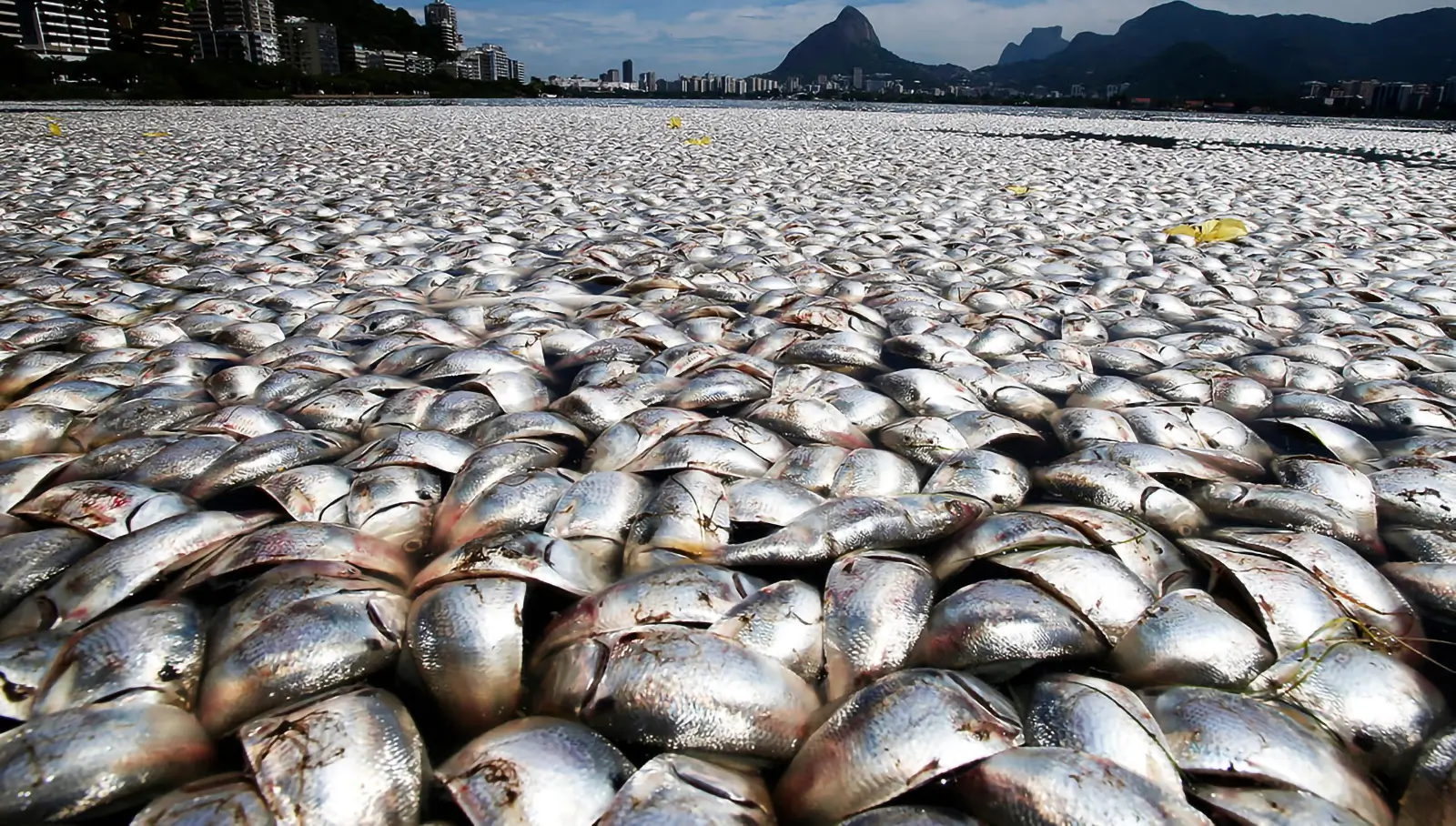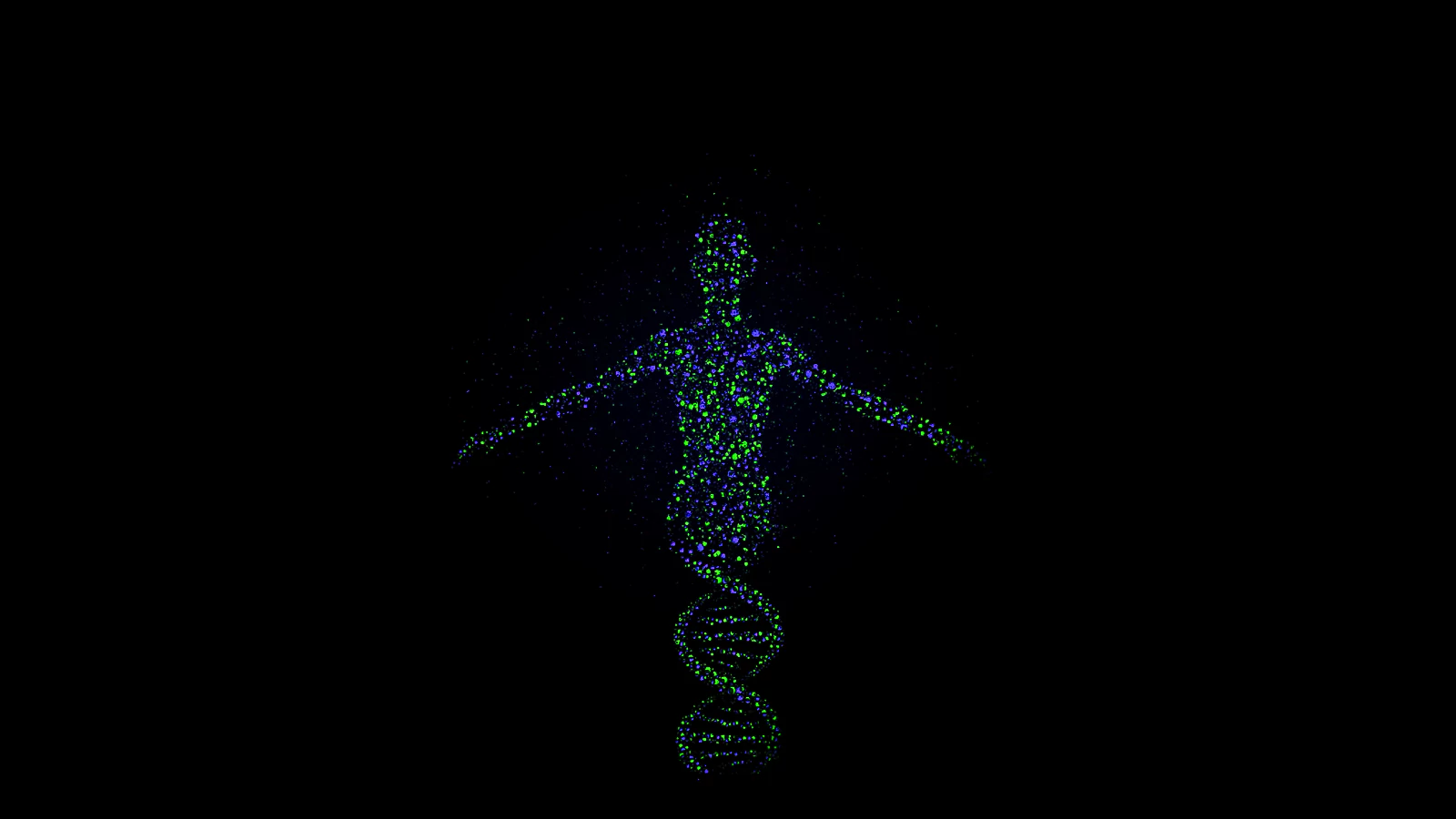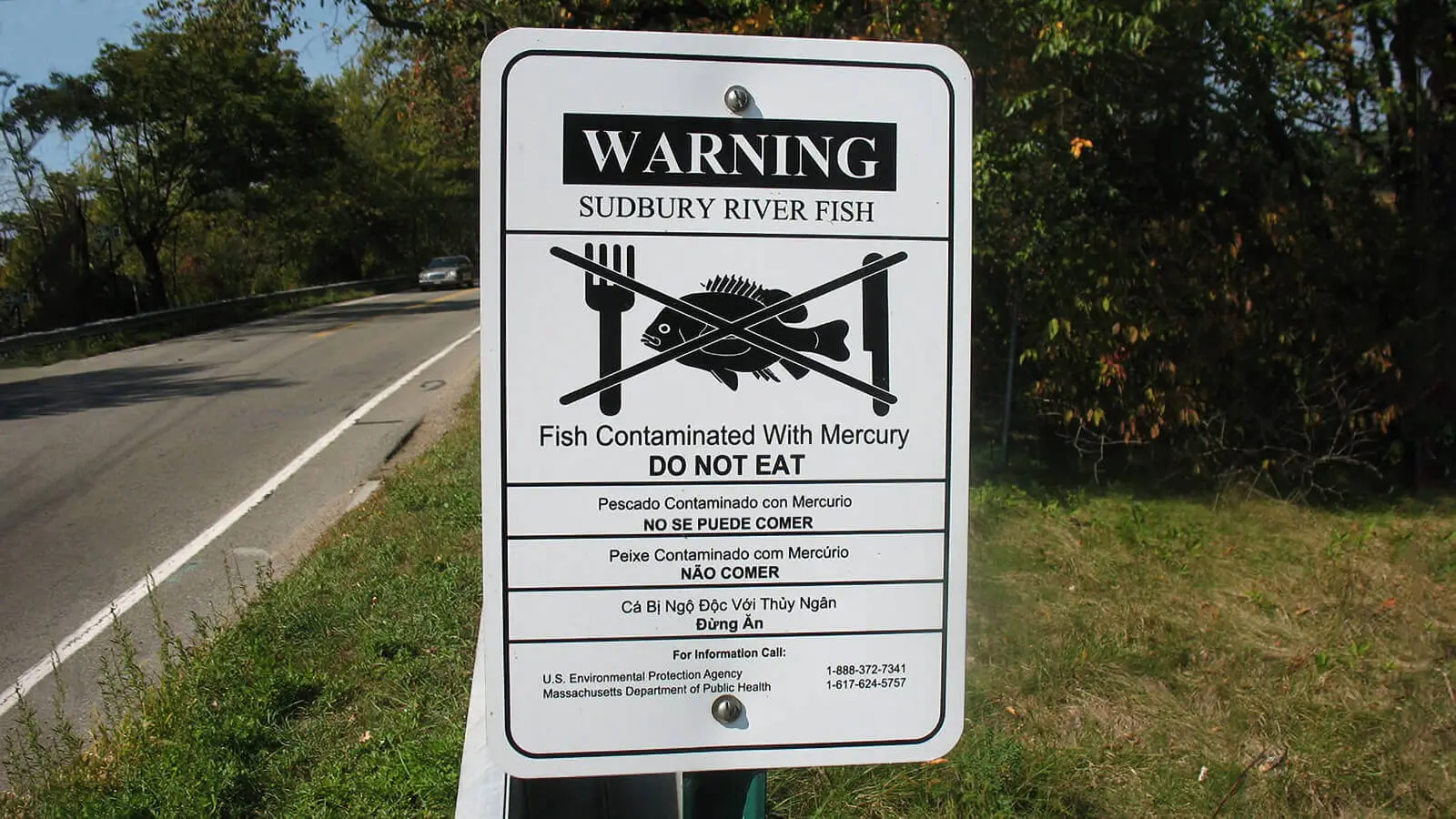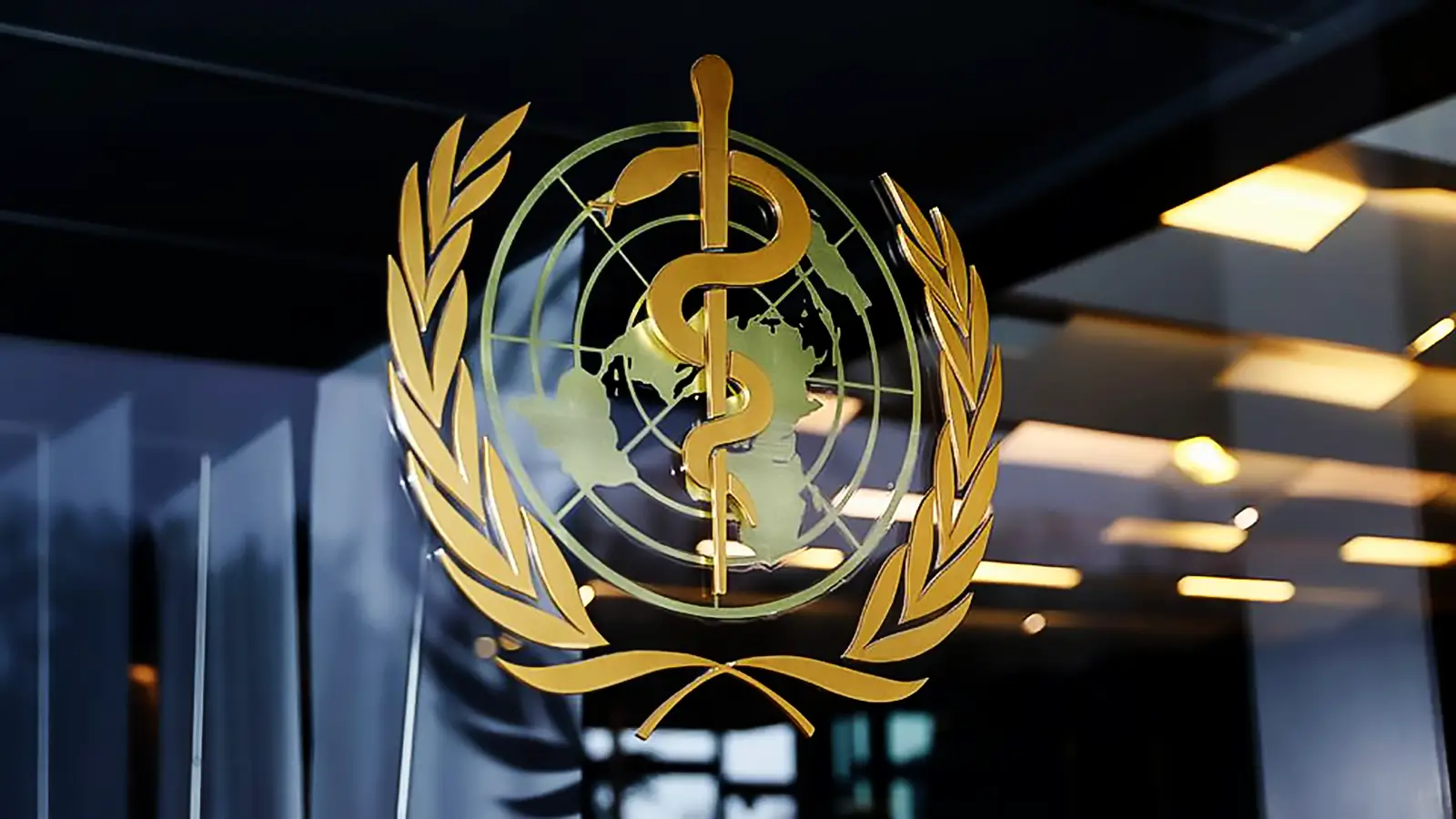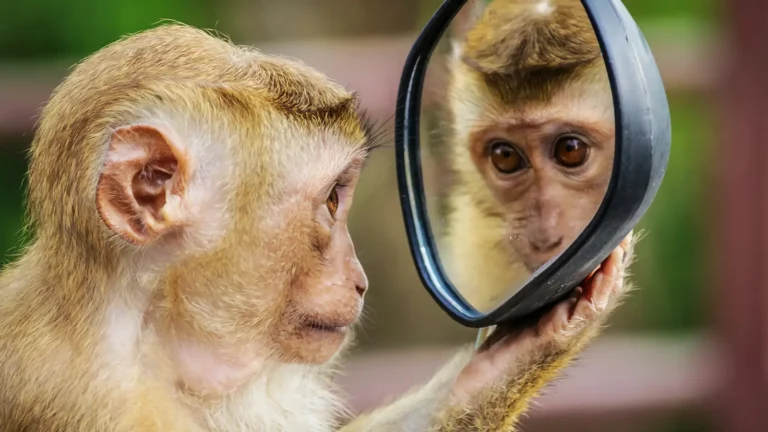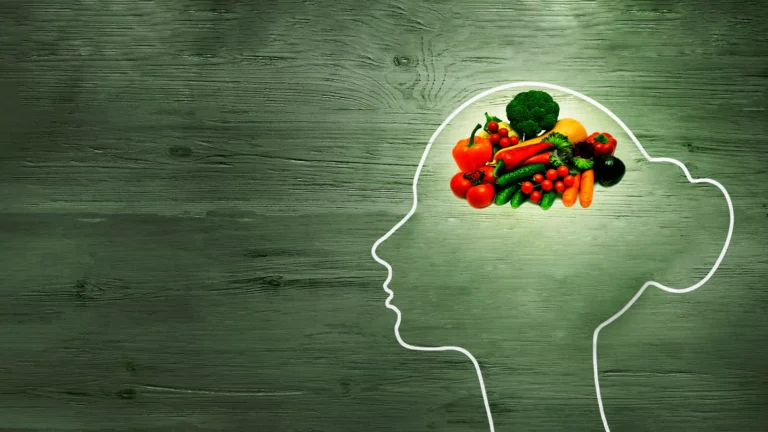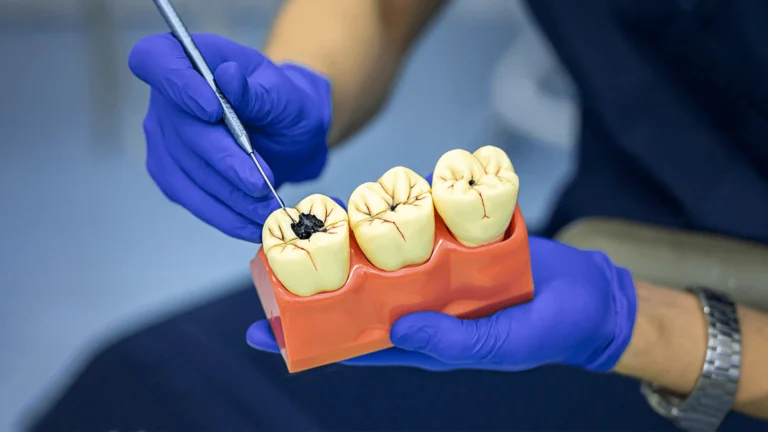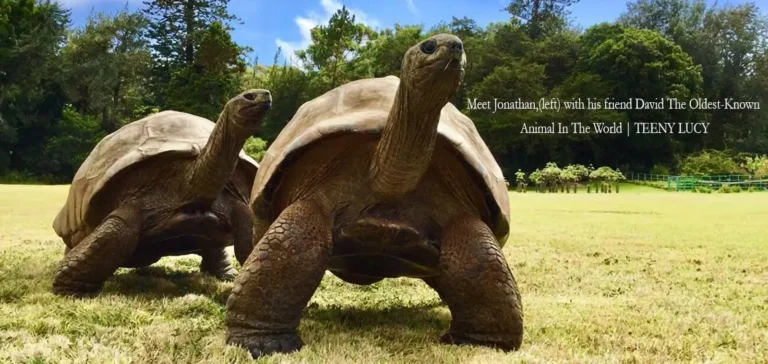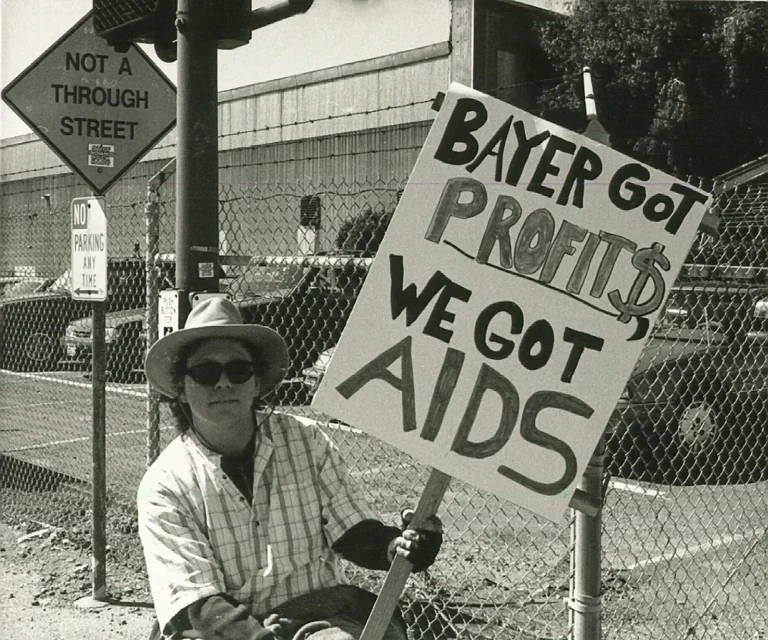Pesticides in Food, Exposure in The Standard American Diet- 80 Percent From Meat
More than 80 percent of pesticides in food exposure in the standard American diet comes from animal products, not from fruits or vegetables.
Milos Pokimica
Written By: Milos Pokimica
Medically Reviewed by: Dr. Xiùying Wáng, M.D.
Updated August 4, 2023The agricultural revolution led to the rise of the human population, and that is not something that can change no matter how much we encourage environment-friendly solutions. One thing, and maybe the only thing we are able to do is to lower our exposure to pollution by going organic and going low on a food chain as much as possible.
Most of the pesticides in food and especially heavy metals and other toxic waste pollutants we get, we get from meat.
There is a misconception that when we clean or wash pesticides from plants we lower our exposure. Most of the pesticide deposits cannot be removed by washing. They are mostly made on an oily base so that rain won’t wash them off. Correct numbers are just a couple of percent overall. Washing the apple removes around 15%, and peeling removes around 85% but also removes most of the nutrition in the peal. If you do not eat organic and most of us do not, then do wash and scrub all produce thoroughly under running water. When you soak, there is no abrasive effect that running water provides. Running water will help remove bacteria (some of them may come from animal feces and be dangerous). There are also toxic chemicals on the surface of fruits and vegetables and dirt from crevices.
However, the real truth is that more than 80 percent of pesticides in food exposure in the standard American diet come from animal products, not from fruits or vegetables.
I do not mean just fish with DDT and mercury accumulation from the ocean. Regular animal fat on farms accumulates toxins in the same manner. Cows, pigs, sheep, and chickens are held in unsanitary and overcrowded conditions that exist on factory farms. To prevent pest infestation, they are directly sprayed with pesticides. Also, they are exposed to a large number of crop pesticides through their food. Animal feed sprayed with pesticides represent the primary source of exposure from pesticides in food. Somehow we forget that all or most of the food that goes to animal feed are sprayed too. This is somehow not angulated by most people. By the estimates of the Environmental Working Group, every year in the U.S. around 167 million pounds of pesticides are just used to grow animal feed. These pesticides are eaten, and then they accumulate in animals. Pesticides are fat-soluble substances so every single gram will be assimilated into the adipose tissue of the animals and will end up on our plates eventually. This can be allowed because there is no restriction in legal terms for pesticides used in animal feed. For instance, the most commonly used pesticide in the world is glyphosate. Legally, residues that are allowed in animal feed are more than 100 times than what is allowed on grains consumed directly by humans. What is even worse is that animals eat enormous amounts of feed during the day and all of the toxins just get concentrated even more. It is a term known as biomagnification in a food chain.
The amount of glyphosate allowed in red meat that you buy in the store is more than 20 times that for most plant crops. There is a wide range of other different substances that agencies don’t even test for. These regulations have nothing to do with preserving public health, and nobody likes to talk about this because you cannot rinse pesticides out of the meat, so this information is kept out of the public.
All of that poison is not going to disappear when we grill our burger magically. Most of the pesticides in the food we will ingest or let’s say most of the people will ingest comes from animal products. Meat cannot be peeled or washed.
This is a quote from the FDA website (click here):
“Do animals eat GMO crops?
More than 95% of animals used for meat and dairy in the United States eat GMO crops. Research shows that eggs, dairy products, and meat from animals that eat GMO food are equal in nutritional value, safety, and quality to foods made from animals that eat only non-GMO food. Studies also show that the health and safety of animals are the same whether they eat GMO or non-GMO foods
When animals eat GMO foods, the DNA in the GMO food does not transfer into the DNA of the animal that eats it. This means that animals that eat GMO food do not turn into GMOs. If the DNA did transfer from food into the animal that eats it, an animal would have the DNA of any food it ate, GMO or not. In other words, cows do not become the grass they eat, and chickens don’t become the corn they eat. Similarly, the DNA from GMO food for animals is not in the meat, eggs, or milk from the animal.
Who makes sure food for animals is safe?
The U.S. Food and Drug Administration (FDA) is the primary regulatory agency responsible for ensuring the safety of GMO and non-GMO food for animals. The FDA Center for Veterinary Medicine manages this responsibility. FDA requires that all food for animals be safe for animals to eat, be produced under clean conditions, contain no harmful substances, and be accurately labeled—similar to the requirements for foods for humans.”
They deliberately don’t want you to know the real truth. All of this is true to some extent but irrelevant. The reason animals eat GMOs in the first place is because GMO corn can be sprayed with Roundup and other more potent pesticides. Nutritional value is not the same as in organic farming, commercial land is depleted of all minerals, but even if it is, you will still eat all of those fat-soluble pesticides that will accumulate in the fat of the animals. We will see in other articles just how much of the toxic overload Americans are exposed to in real life. Something FDA doesn’t like to talk about because then they will no longer be able to protect their big industries. They like to call their GMO marketing initiative “Feed Your Mind” (www.fda.gov/feedyourmind).
There is also something called cannibalistic feed biomagnification. Mercury is not just in fish. We feed a fish meal to other farm animals. Even to the cattle. Farmers discovered that if they feed animal protein to the cattle by mixing it with other plant food sources, cattle tend to grow more and produce more milk. It is not just humans that can eat animal protein all plant-eaters can eat animal protein if the protein is first heated and treated even grazers. Psychologically we think we are omnivores because we can eat thermally processed meat but that is not the case. If you do not believe me here is one study (Atwal et al., 1992). This study’s conclusion was:
“There seems to be a good reason to feed a good quality protein like a fish meal to cows producing more than 30 kg/d of milk.”
Fish-eating cows produce milk that has no aftertaste, so yes this study was a success. Except for mercury. We get saturated fat from milk and meat and all of the rest of the bad stuff, and as surplus, we also get mercury from fish in the milk of the cows too.
When we test all of the food products for toxic pollution levels, number one is fish number two is chicken. The two “healthy” types of meat. Cheese comes the third. Worst than butter or bacon.
We also feed all of the slaughterhouse waste products of animals to other animals. Because of cannibalism the pollutants just circle around.
The economically well-designed but extremely toxic trend among affluent countries is to feed any animal byproducts that cannot be eaten by humans to poultry and ruminants (herbivores such as sheep, cows, and goats). In industry, nothing is wasted including bones, manure, blood, heads, and so on. Most of it goes to dog food or animal food. All of the blood, bones and even roadkill corpses, supermarket waste meat, anything from the city shelter, work animals, euthanized pets, and any protein no matter how decaying are grounded together, then heated to sterilize them, then dried, and then used as animal feed. It is all part of the rendering business.
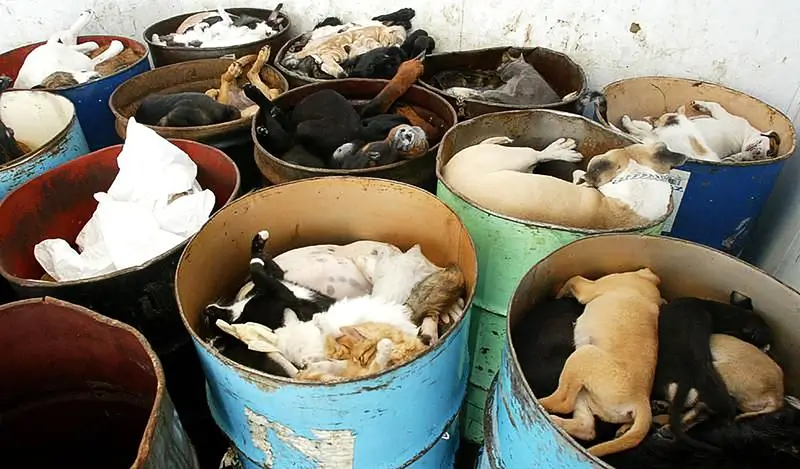
Inedible dead animals and that means all of them including dogs and cats and other dead pets like reptiles, insects, or anything that is no longer alive, end up in feed used to fatten up future generations of their own kind. Protein is a protein. What cannot be used as animal feed or in other words that can be extracted for more expensive products will end up transmogrified into rubber, car wax, paint, and industrial lubricants. Some of it even goes to animal feed for chicken or fish farms and will not be used for pallets for pets meaning it will end up eventually on our own kitchen table. Most of the toxins that are thermostable will persist from one species to another. Prion disease is one good example of what can come out of this (Mad cow disease). Not only are harmful prions found in the meats of animals, all other pollutants just get passed from one animal to another and eventually will end up on our own plate.
People have a hard time with this data so let us look at some studies.
For example, if we look at perfluorooctane sulfonates almost all of it comes from meat and fish (Kannan et al., 2004).
In this study, they measured the levels of the dietary influx of PCBs and organochlorine pesticides for children and adults (Fromberg et al., 2011). For PCP it was the number one fish than meat, fats, cheese, dairy, eggs poultry. For DDT it was fish, meat, fat, dairy, cheese, and eggs. For HCB (hexachlorobenzene) it was the same. These substances are fat-soluble and are in the environment and they bioaccumulate in the food chain.
What about Dioxins?
Every five years, the US government releases a report about the number of dioxins in the food supply because they have to by law. This type of toxin is fat-soluble and it will also bioaccumulate in the food chain. Dioxins are toxic waste pollutants spewed out into the atmosphere by combustion in different types of industries and will eventually end up in the ocean for eternity to come. So the fish is number one and number two would be eggs, and then the rest of the meats. The problem is that in America the entire population is well above the upper tolerable exposure limit for both PCP and Dioxins set by the cancer prevention board in every age group (Lorber et al., 2009). The situation can become much worse if you want to become pregnant.
And these would be just a couple of substances I use as an example. The number of pesticides in food and environmental toxins we are exposed to is outstanding. There is a “dirty dozen” list but the real number is in the hundreds. Maybe even thousands. There is no real science in all of these chemicals yet. There are too many of them and nobody wants to do research because that will make a business more expensive.
One more false narrative is that somehow grass-fed beef is healthier and less polluted and in a logical sense it should be. The only problem is that when tested for carcinogenicity because our world by now is so polluted even that organically grown meat was shown to be only marginally less carcinogenic. Today only real organic meat would be wild game meat but this has to be a subject for another article.
References:
- Gilbert, J. (2005). Environmental contaminants and pesticides in animal feed and meat. Improving the Safety of Fresh Meat, 132-155. https://doi.org/10.1533/9781845691028.1.132
- LeDoux M. (2011). Analytical methods applied to the determination of pesticide residues in foods of animal origin. A review of the past two decades. Journal of chromatography. A, 1218(8), 1021–1036. https://doi.org/10.1016/j.chroma.2010.12.097
- Atwal, A. S., & Erfle, J. D. (1992). Effects of feeding fish meal to cows on digestibility, milk production, and milk composition. Journal of dairy science, 75(2), 502–507. https://doi.org/10.3168/jds.S0022-0302(92)77787-X
- Kannan, K., Corsolini, S., Falandysz, J., Fillmann, G., Kumar, K. S., Loganathan, B. G., Mohd, M. A., Olivero, J., Van Wouwe, N., Yang, J. H., & Aldoust, K. M. (2004). Perfluorooctanesulfonate and related fluorochemicals in human blood from several countries. Environmental science & technology, 38(17), 4489–4495. https://doi.org/10.1021/es0493446
- Fromberg, A., Granby, K., Højgård, A., Fagt, S., & Larsen, J. (2011). Estimation of dietary intake of PCB and organochlorine pesticides for children and adults. Food Chemistry, 125(4), 1179-1187. https://doi.org/10.1016/j.foodchem.2010.10.025
- Lorber, M., Patterson, D., Huwe, J., & Kahn, H. (2009). Evaluation of background exposures of Americans to dioxin-like compounds in the 1990s and the 2000s. Chemosphere, 77(5), 640–651. https://doi.org/10.1016/j.chemosphere.2009.08.016
Related Posts
Do you have any questions about nutrition and health?
I would love to hear from you and answer them in my next post. I appreciate your input and opinion and I look forward to hearing from you soon. I also invite you to follow us on Facebook, Instagram, and Pinterest for more diet, nutrition, and health content. You can leave a comment there and connect with other health enthusiasts, share your tips and experiences, and get support and encouragement from our team and community.
I hope that this post was informative and enjoyable for you and that you are prepared to apply the insights you learned. If you found this post helpful, please share it with your friends and family who might also benefit from it. You never know who might need some guidance and support on their health journey.
– You Might Also Like –

Learn About Nutrition
Milos Pokimica is a doctor of natural medicine, clinical nutritionist, medical health and nutrition writer, and nutritional science advisor. Author of the book series Go Vegan? Review of Science, he also operates the natural health website GoVeganWay.com
Medical Disclaimer
GoVeganWay.com brings you reviews of the latest nutrition and health-related research. The information provided represents the personal opinion of the author and is not intended nor implied to be a substitute for professional medical advice, diagnosis, or treatment. The information provided is for informational purposes only and is not intended to serve as a substitute for the consultation, diagnosis, and/or medical treatment of a qualified physician or healthcare provider.NEVER DISREGARD PROFESSIONAL MEDICAL ADVICE OR DELAY SEEKING MEDICAL TREATMENT BECAUSE OF SOMETHING YOU HAVE READ ON OR ACCESSED THROUGH GoVeganWay.com
NEVER APPLY ANY LIFESTYLE CHANGES OR ANY CHANGES AT ALL AS A CONSEQUENCE OF SOMETHING YOU HAVE READ IN GoVeganWay.com BEFORE CONSULTING LICENCED MEDICAL PRACTITIONER.
In the event of a medical emergency, call a doctor or 911 immediately. GoVeganWay.com does not recommend or endorse any specific groups, organizations, tests, physicians, products, procedures, opinions, or other information that may be mentioned inside.
Editor Picks –
Milos Pokimica is a doctor of natural medicine, clinical nutritionist, medical health and nutrition writer, and nutritional science advisor. Author of the book series Go Vegan? Review of Science, he also operates the natural health website GoVeganWay.com
Latest Articles –
Plant Based News
-
Vegan Marathoner To Run Length Of UK For His 60th Birthday
on July 1, 2025
-
These Easy Plant-Based Enchiladas Are Oil-Free
on July 1, 2025
-
‘This Is Our Most Popular Vegan Salad After 20 Years In Business’
on July 1, 2025
-
Plant-Based Foods ‘More Viable’ Option Than Insect-Based For Replacing Meat
on July 1, 2025
-
Texas Has Become The Seventh US State To Ban Cultivated Meat Sales
on June 30, 2025
-
Vegan Feta And Corn Salad
on June 30, 2025
-
Sunflower Meal Is A ‘Promising’ New Protein Base For Meat Alternatives, Says Study
on June 30, 2025
Top Health News — ScienceDaily
- Scientists just mapped how the body rejects pig organs—and how to stop iton July 1, 2025
Scientists have achieved an unprecedented look into how the human immune system attacks a transplanted pig kidney, using spatial molecular imaging to map immune activity down to the cellular level. They discovered early signs of rejection within 10 days and pinpointed key immune players—like macrophages—driving the response. Even more exciting: when targeted therapies were applied, the immune assault weakened. As U.S. clinical trials of pig kidney transplants begin, this breakthrough offers […]
- This virus infects millions—and we just discovered its secret weaponon July 1, 2025
Scientists have discovered a stealthy mechanism that cytomegalovirus (CMV)—the leading infectious cause of birth defects in the U.S.—uses to infiltrate blood vessel cells while evading immune detection. The virus forms a hidden protein complex that acts like a molecular “backdoor,” allowing it to bypass the immune system’s defenses. This newly identified pathway may explain why vaccine efforts have failed for decades and opens the door to targeted therapies that could finally prevent […]
- Scientists just found a sugar switch that protects your brain from Alzheimer’son June 30, 2025
Scientists have uncovered a surprising sugar-related mechanism inside brain cells that could transform how we fight Alzheimer’s and other dementias. It turns out neurons don’t just store sugar for fuel—they reroute it to power antioxidant defenses, but only if an enzyme called GlyP is active. When this sugar-clearing system is blocked, toxic tau protein builds up and accelerates brain degeneration.
- This AI tracks lung tumors as you breathe — and it might save liveson June 30, 2025
An AI system called iSeg is reshaping radiation oncology by automatically outlining lung tumors in 3D as they shift with each breath. Trained on scans from nine hospitals, the tool matched expert clinicians, flagged cancer zones some missed, and could speed up treatment planning while reducing deadly oversights.
- Ancient DNA reveals leprosy hit the Americas long before colonizationon June 30, 2025
Leprosy’s tale stretches from 5,000-year-old skeletons in Eurasia to a startling 4,000-year-old case in Chile, revealing that the rare strain Mycobacterium lepromatosis haunted the Americas millennia before Europeans arrived. Armed with cutting-edge ancient-DNA sleuthing, scientists have pieced together remarkably well-preserved genomes that challenge the idea of leprosy as purely a colonial import and hint that the disease may have homegrown American roots awaiting confirmation by future […]
- Scientists discover ‘off switch’ enzyme that could stop heart disease and diabeteson June 30, 2025
Researchers at UT Arlington have discovered a key enzyme, IDO1, that when blocked, helps immune cells regain their ability to properly process cholesterol—something that breaks down during inflammation. This breakthrough could offer a powerful new way to fight heart disease, diabetes, cancer, and more. By “turning off” this enzyme, the team restored cholesterol absorption in macrophages, potentially stopping disease at the source. Even more promising, they found a second enzyme, NOS, that […]
- Fire smoke exposure leaves toxic metals and lasting immune changeson June 30, 2025
Smoke from wildfires and structural fires doesn t just irritate lungs it actually changes your immune system. Harvard scientists found that even healthy people exposed to smoke showed signs of immune system activation, genetic changes tied to allergies, and even toxic metals inside their immune cells.
PubMed, #vegan-diet –
- Blood biomarkers of Alzheimer’s disease in Australians habitually consuming various plant-based dietson June 30, 2025
BackgroundEvidence suggests that plant-based diets (PBDs) may be protective against neurodegenerative diseases such as Alzheimer’s disease (AD).ObjectiveThis study examined associations between blood-based AD biomarkers in individuals 30-75 years without current or diagnosed cardiovascular disease following different PBDs versus regular meat-eating diets (RMEs).MethodsThis secondary analysis of the Plant-based Diets study measured Aβ(1-42)/Aβ(1-40), p-tau181, NFL, and GFAP in 237 plasma […]
- Zinc supplementation among zinc-deficient vegetarians and vegans restores antiviral interferon-α response by upregulating interferon regulatory factor 3on June 28, 2025
CONCLUSION: We identified zinc-dependent IRF3 expression as an essential cellular mechanism behind impaired IFNα response in zinc-deficient subjects. This may contribute to disturbed antiviral immunity and cause increased susceptibility to virus infections in vivo. Oral zinc supplementation effectively restored IRF3 and IFNα levels. Hence, nutritional interventions may become increasingly important in order to prevent health implications from micronutrient deficiencies among vegetarians and…
- Dietary Patterns and Sustainable Lifestyles: A Multicenter Study from Latin America and Spainon June 26, 2025
Food systems interact through multiple dimensions including food security, nutrition, and planetary health. This study aims to associate different dietary patterns with sustainable lifestyles in Latin America and Spain. This was an observational, analytical, multicenter, cross-sectional survey study, with a total of 6412 participants. A self-administered questionnaire was developed in an online format in the Google Docs interface. The questionnaire was divided into sections: (1) […]
- Micronutrient intake and nutritional status in 16-to-24-year-olds adhering to vegan, lacto-ovo-vegetarian, pescatarian or omnivorous diets in Swedenon June 26, 2025
CONCLUSION: Youth, regardless of dietary practice, need support to ensure adequate micronutrient intakes, particularly for vitamin D and selenium. Further research is required to evaluate iodine nutrition in Swedish youth.
- Integrating comparative genomics and risk classification by assessing virulence, antimicrobial resistance, and plasmid spread in microbial communities with gSpreadCompon June 26, 2025
CONCLUSIONS: The gSpreadComp workflow aims to facilitate hypothesis generation for targeted experimental validations by the identification of concerning resistant hotspots in complex microbial datasets. Our study raises attention to a more thorough study of the critical role of diet in microbial community dynamics and the spread of AMR. This research underscores the importance of integrating genomic data into public health strategies to combat AMR. The gSpreadComp workflow is available at…
Random Posts –
Featured Posts –

Latest from PubMed, #plant-based diet –
- Whole grain and refined grain consumption and the risk of hypertension: a systematic review and meta-analysis of prospective studiesby Dagfinn Aune on July 1, 2025
A high intake of whole grains has been associated with a reduced risk of hypertension, however, studies have not been entirely consistent. Findings regarding refined grains and hypertension have also been inconsistent. We conducted a systematic review and meta-analysis of prospective cohort studies on whole grain and refined grain consumption and hypertension risk. PubMed and Embase databases were searched up to 25th of July 2024. Random effects models were used to estimate summary relative…
- Blood biomarkers of Alzheimer’s disease in Australians habitually consuming various plant-based dietsby Shaun Eslick on June 30, 2025
BackgroundEvidence suggests that plant-based diets (PBDs) may be protective against neurodegenerative diseases such as Alzheimer’s disease (AD).ObjectiveThis study examined associations between blood-based AD biomarkers in individuals 30-75 years without current or diagnosed cardiovascular disease following different PBDs versus regular meat-eating diets (RMEs).MethodsThis secondary analysis of the Plant-based Diets study measured Aβ(1-42)/Aβ(1-40), p-tau181, NFL, and GFAP in 237 plasma […]
- Association of plant-based diets with subclinical cardiovascular disease in U.S. adults, 1999-2004by Audrey Ting on June 30, 2025
CONCLUSION: Higher adherence to a healthy plant-based diet was inversely associated with elevated cTnI and higher adherence to an unhealthy plant-based diet was positively associated with elevated cTnI in a nationally representative sample of U.S. adults. Supporting access to and adoption of healthy plant-based diets may be a useful strategy for promoting population-level cardiovascular health.
- Metaproteomics-based stable isotope fingerprinting links intestinal bacteria to their carbon source and captures diet-induced substrate switchingby Angie Mordant on June 29, 2025
Diet has strong impacts on the composition and function of the gut microbiota with implications for host health. Therefore, it is critical to identify the dietary components that support growth of specific microorganisms in vivo. We used protein-based stable isotope fingerprinting (Protein-SIF) to link microbial species in gut microbiota to their carbon sources by measuring each microorganism’s natural 13C content (δ13C) and matching it to the 13C content of available substrates. We fed…
- Prevalence and socio-economic disparities in vegetarianism and flexitarianism over 15 years: the Dutch Lifelines Cohortby Yinjie Zhu on June 29, 2025
Transitioning to more plant-based diets is crucial for both planetary and human health, and ensuring an equitable transition across all socio-economic groups is also important. However, empirical evidence on the prevalence and socio-economic disparities in vegetarianism and flexitarianism over time in the same population is scarce. This study investigated this in a general Dutch adult population over 15 years. From three general assessments of the Dutch Lifelines study, 143 359 participants […]
- A Plant-Based Diet for Cardiovascular Risk Reduction in Kidney Disease with a Focus on Cardiovascular-Kidney-Metabolic Syndromeby Rachel Shi on June 29, 2025
Cardiovascular-kidney-metabolic (CKM) syndrome is a complex disorder involving an interplay of metabolic risk factors such as obesity, type 2 diabetes mellitus, hyperlipidemia, hypertension, and chronic kidney disease. Because these risk factors augment the risk for cardiovascular complications, healthy nutrition in CKM syndrome is crucial. In particular, a healthy plant-based diet is effective in improving metabolic dysfunction through weight loss, enhancing glucose and blood pressure […]
